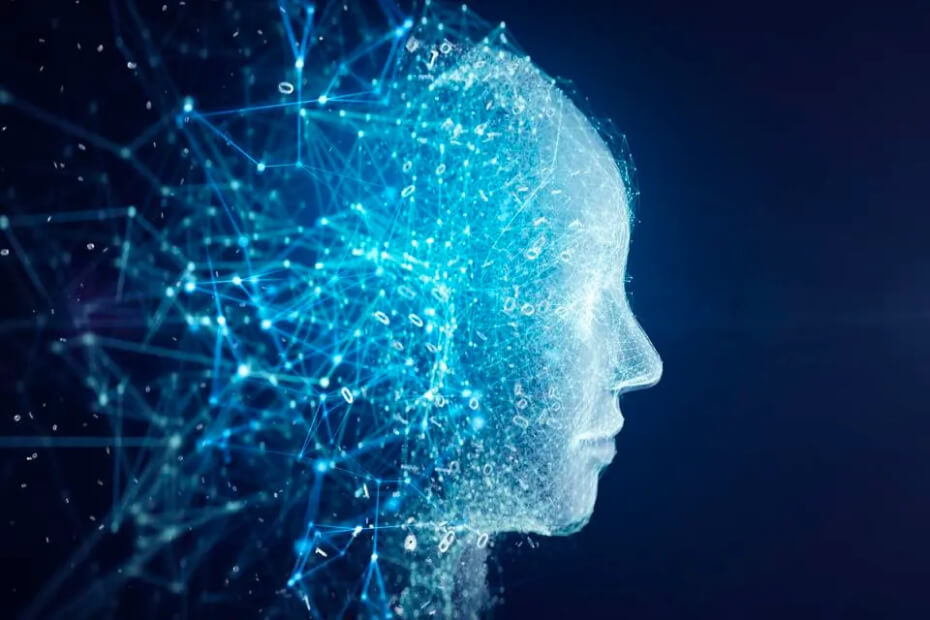Understanding the user is of utmost importance for creating intuitive user experiences. In order to create better UX designs, we must gather more data on our users. Acquiring user data is now simpler than ever thanks to technological advancements. The creation of immersive experiences is made possible by artificial intelligence and large data. A larger canvas for intuitive designs that promote user interactions is made possible by AI in UX design.
Brands enable their consumers to be more productive by enabling them to make decisions more quickly and intelligently through smarter UX designs.
Artificial intelligence (AI) has the power to revolutionize user interaction with digital products when implemented properly. It is critical to comprehend the significance of intelligent designs in order to comprehend how AI affects the user experience.
As a result of increased productivity and increased contentment, intelligent user experiences increase user satisfaction. Customer satisfaction increases the likelihood that users will stick with your product longer and might even refer more people to it.
Understanding the AI in UX Design
AI in UX design has the potential to significantly increase the design’s efficacy for consumers. It gathers the data required to more skillfully create immersive user experiences by utilizing big data from many sources.
By improving personalisation and automating processes, artificial intelligence has the potential to significantly increase user productivity. It all comes together to provide a comprehensive user experience and boost user retention.
Benefits of Implementing AI in UX Design
Artificial Intelligence has applications across various domains and sectors. It can assist designers in finishing the tedious chores required to finish a design project in the area of user experience.
The following elements of UX design can be enhanced by AI:
- Personalization: In order to provide solid product and content suggestions based on user behavior and preferences, AI collects and analyzes user data.
- Predictive Modelling: Aids in anticipating user actions and choices to improve UX design.
- Adaptive Learning: Examines user behavior to gain insight and modify to meet the needs of each unique user.
- Natural Language Processing: Using voice commands to facilitate conversational engagements will improve accessibility and usability.
When employing AI for UX design, a UX designer has to be mindful of data bias and ethical issues.
AI learns from the data that is supplied to it. This data is not perfect and might contain bias, which will eventually show up in the outcomes that the technology provides.

How can AI be used for UX Design?
Multifaceted support is available for UI/UX designers from artificial intelligence (AI).
We are going to talk about the various ways that artificial intelligence (AI) can be used to create immersive and interactive user experiences.
1. Natural Language Processing
When combined with machine learning (ML), natural language processing (NLP) and ML can readily comprehend complex user queries and provide superior results.
In addition, when more user questions are received, these results will continue to advance and provide a better overall user experience.
To improve engagement and comprehend user intent, natural language processing (NLP) interprets voice commands from users. Using chatbots, voice assistants, and conversational interfaces is a popular approach to integrate NLP technology into your platform. NLP enables voice-based user interaction with the platform. This enhances the platform’s accessibility as well.
2. Computer Vision & Image Recognition
The online retailer Myntra expanded its features to include image search. Users were given the ability to locate and buy the clothing and accessories they saw nearby.
The use of computer vision and picture recognition AI algorithms in the two aforementioned scenarios results in an increase in user personalisation. The technology uses computer vision to understand the surroundings that the user is in. For instance, Lenskart’s app and website employ computer vision to recognize a user’s facial features. Using augmented reality, it uses AR to show glasses precisely where the user’s eyes are, giving them a preview of how a product will appear on them.
On the other hand, image recognition makes use of data to identify photos that users have taken or uploaded in order to locate products that correspond. It considers several factors, including color, pattern, style, and so forth. Again, this is dependent on the data that the AI is fed.
Image recognition and computer vision, like natural language processing, can boost the usability and accessibility of your platform, resulting in a higher conversion rate.
Also read: Top 10 Revolutionary AI Tools that Change Web Design
3. AI-Driven Content Generation and Personalization
In order to provide your consumers with relevant product recommendations, AI compiles user data such as past purchases, products seen, and customer wishlists. They can locate related products to help consumers make better selections about what to buy and check out more quickly.
Google’s Discover function is the best illustration of AI-driven content personalisation. In order to suggest content that a user might find interesting, it examines each user’s unique online behavior, their favorite news and insights websites, the subjects they follow, and related data.
People will spend more time on the site when they find information they are interested in, which could eventually result in more conversions for your company.
4. User Research and User Testing with AI
AI technology helps build extremely detailed user personas by using user data. Additionally, AI can readily provide you with insights from a far bigger user base than traditional user research data because it has access to data from all over the world.
Artificial intelligence (AI) can help UX designers save time by creating and testing wireframes and prototypes more quickly.
AI can assist in interpreting the opinions of users-whether favorable or negative-in texts such as reviews, responses, and feedback. Additionally, it can be applied to the analysis of user input from a variety of sources, including questionnaires, interviews, and focus groups.
By monitoring user behavior throughout testing and research, AI can glean insightful information. With all the information and understanding that has been obtained in this way, incredibly intuitive user experiences that successfully entice people to become paying clients can be made.

How to Ensure Fair use of AI in UX Design?
1. Using Explainable AI in UX Design
If users of a complicated technology such as artificial intelligence are unaware of the process by which your design generates its outputs, it is simpler to lose their faith. In industries like finance and medical, this is extremely important. People are more hesitant to trust any AI-driven platform when their lives and livelihoods are at risk.
More complex artificial intelligence frequently employs computation methods and algorithms that are more difficult for humans to understand or analyse.
Since the AI generates black boxes directly from the data it receives, even engineers find it difficult to understand how the AI arrived at a certain conclusion.
With the purpose of fostering transparency and simpler interpretability in AI-driven UX designs, Explainable AI (XAI) aims to educate consumers about AI algorithms. To guarantee explainable AI, some methods to try are:
- Continuous AI model evaluation: Contrasting AI data, insights, and outcomes with those of the prior models and the modifications applied to produce the new model.
- Using KPIs for AI risks: To enhance XAI, important performance factors such as comprehension, data protection, privacy compliance, bias, and fairness are assessed. Ultimately, the behavior of the system will be the responsibility of UX designers and engineers.
- Ensure quality data to train AI models: AI uses the data it is supplied to produce results. As a result, it is essential to supply high-quality data that corresponds with the data it will be using. For instance, an artificial intelligence educated on Japanese language processing would not be able to understand voice commands in Indian languages and would yield unreliable results.
2. AI in Multimodal Interfaces
The term “artificial intelligence” in multimodal interfaces describes the incorporation of AI methods and tools into user interfaces that facilitate various forms of interaction. Users can interact with a system utilizing many sensory channels at once or interchangeably by combining diverse input modalities, including as speech, gestures, touch, and vision, in a multimodal interface.
In relation to the aforementioned AI methods, the following is how AI can be applied to multimodal interfaces:
- Natural language processing: NLP enables users to communicate with the system by using text input, voice commands, or both at once. Artificial intelligence (AI) facilitates speech recognition, language comprehension, and appropriate answer generation.
- Computer vision: Users can engage with the system through touchless gestures or hand motions thanks to AI algorithms’ ability to recognize and track human actions.
- Context awareness: The system may analyze user behaviors, preferences, and ambient elements to tailor its answers and offer customised experiences by utilising machine learning techniques.
- Intent recognition: By examining user input from several modalities, the system may determine the user’s intents and adjust its response appropriately.
- Adaptive learning: By utilizing machine learning algorithms, the system can modify its actions, suggestions, or reactions according to past data and user preferences.
Conclusion
Artificial intelligence is changing how we develop new things, complete tasks, and engage with digital products as a result of ongoing advancements in the field. Designers may provide their audiences with sophisticated user experiences while also streamlining their labor by using AI into UX design.
Nevertheless, in order to lessen prejudice, enhance outcomes, and boost user confidence, it is also essential to guarantee equitable AI usage.
Author
Jayesh Patel
Jayesh Patel is a Professional Web Developer & Designer and the Founder of InCreativeWeb.
As a highly Creative Web/Graphic/UI Designer - Front End / PHP / WordPress / Shopify Developer, with 14+ years of experience, he also provide complete solution from SEO to Digital Marketing. The passion he has for his work, his dedication, and ability to make quick, decisive decisions set him apart from the rest.
His first priority is to create a website with Complete SEO + Speed Up + WordPress Security Code of standards.